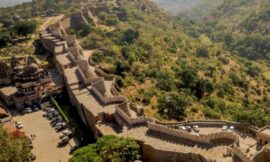The most famous incarnations of Vishnu are known as the Vishnu Dashavatara. The word “Dashavatara” means “ten incarnations.” Among Vishnu’s ten incarnations, the first four occur during the Satya Yuga (the first of the four ages in Hinduism). The next three incarnations occur during the Treta Yuga, the eighth incarnation during the Dvapara Yuga, and the ninth incarnation during the Kali Yuga. The tenth incarnation, Kalki, is said to appear at the end of the Kali Yuga. Although the incomprehensible Bhagavan resides in Vaikuntha, he descends to the earthly realm to bless his devotees. When there is harm to righteousness, he incarnates to pablo4d destroy adharma and restore dharma. He takes birth again and again in different ages for the protection of the good, the destruction of the wicked, and the establishment of dharma.
![]()
Page Contents
The Ten Avatars of Vishnu (10 Avatars):
1). 🐟 Matsya Avatar:
![]()
Matsya Avatar is the first incarnation of Lord Vishnu among the ten avatars and the first avatar of the Satya Yuga. During the great deluge, Lord Vishnu incarnated as Matsya (the fish) to protect the sacred Vedas from being destroyed, and to restore them to the sages after the flood.
When Vishnu was in a state of Yogic sleep, an Asura emerged from his ears and stole the Vedas, hiding them deep under the ocean. Vishnu, knowing this, decided to destroy the demon and restore the Vedas. During the Satya Yuga, King Satyavrata Manu, a great devotee of Vishnu, was receiving various omens about an impending disaster. These omens troubled his heart, and he prayed silently for the protection of his people, animals, and kingdom. He firmly believed that the deity he trusted would undoubtedly protect him.
One day, while going for a bath in the river, he found a small fish in his palm. When he tried to release it back into the water, the fish spoke in a frightened voice, asking him to protect it from larger fish and crocodiles. Surprised by the talking fish, the king placed it in his water pot and took it home. Soon, the fish grew larger and larger until it filled the entire pot. The astonished king then placed the fish in a larger tank, but the fish continued to grow. Eventually, he placed it in a lake, and from there, the fish was released into the ocean.
The king, now completely convinced, realized that the fish was indeed an incarnation of Vishnu. The fish, which had now taken the form of a divine being, said to the king: “O King, the end of the current Yuga is near, and great floods will soon submerge the world. Prepare a large boat and fill it with your people, animals, plants, and seeds. In this boat, I will guide you to safety. Tie the serpent Vasuki to the boat’s mast. The ocean will overflow and flood the earth, but I will carry you safely to a mountaintop.”
The fish then disappeared, and Vishnu, in the form of Matsya, dove into the ocean and killed the demon Hayagriva, who had hidden the Vedas. Vishnu restored the Vedas to Lord Brahma.
As foretold, the rains began to pour down heavily. Following the instructions of the fish, King Manu tied the serpent Vasuki to the boat’s mast, and the boat sailed over the turbulent ocean. During this journey, Vishnu taught King Manu the Vedas. Eventually, the boat safely reached the Himalayan region, and the fish disappeared.
Matsya Jayanti:
Matsya Jayanti is celebrated on the third day of the bright fortnight of the month of Chaitra, marking the day of Lord Vishnu’s Matsya Avatar.
2). 🐢 Kurma Avatar (Turtle):
![]()
Kurma Avatar is the second incarnation of Lord Vishnu and the second avatar of the Satya Yuga. Vishnu incarnated as a turtle (Kurma) to protect the world and facilitate the churning of the ocean for the benefit of all.
During the churning of the ocean to obtain valuable treasures like the Kalpavriksha, Kamadhenu, Airavata, and Amrita (nectar), the Mount Mandara was used as the churning rod, and Vasuki, the serpent, was used as the rope. However, the mountain began to sink into the ocean due to the weight and pressure, so Vishnu took the form of a giant turtle (Kurma) to support the mountain and keep it afloat, ensuring that the churning process continued.
Kurma Avatar played a vital role in the cosmic event, ensuring that the ocean did not collapse and that the valuable treasures were successfully obtained. The Kurma Avatar is especially revered in the regions of Chittoor in Andhra Pradesh, where the Kurmari and Shri Kurmam temples are located.
Kurma Jayanti:
Kurma Jayanti is celebrated on the full moon day of the bright fortnight in the month of Vaishakha. This day marks the appearance of Lord Vishnu’s Kurma Avatar.
Here is the English translation with emoji added and the main topic in h3 format:
5). 👣 Vamana Avatar:
![]()
Vamana Avatar is the fifth incarnation of Lord Vishnu and the first avatar of the Treta Yuga. This avatar was taken to defeat the demon king Bali Chakravarti, who had taken control of the three worlds, including the realm of Indra.
Bali, the grandson of Hiranyakashipu, defeated Indra and became the ruler of the three worlds. Alarmed by this, the gods approached Lord Vishnu for help. Vishnu incarnated as Vamana, a dwarf Brahmin boy, and approached Bali during a grand yajna. Vamana asked for three paces of land as a gift. Bali, pleased by the boy’s humility, agreed to grant his wish.
Vamana then transformed into the gigantic form of Trivikrama. With his first step, he covered the heavens, with his second step, he covered the Earth. When he asked Bali where to place the third step, Bali realized that this dwarf Brahmin was none other than Lord Vishnu. In his devotion, Bali offered his head for the third step. Vishnu placed his foot on Bali’s head, sending him to the netherworld (Patalaloka). Pleased with his devotion, Lord Vishnu made Bali the ruler of Patalaloka, immortal and revered.
Vamana Jayanti:
Vamana Jayanti is celebrated on the twelfth day of the bright fortnight of the Bhadrapada month, marking the appearance of Lord Vishnu’s Vamana Avatar.
6). 🪓 Parashurama Avatar:
![]()
Parashurama Avatar is the sixth incarnation of Lord Vishnu and the second avatar of the Treta Yuga. This avatar was taken to rid the Earth of the Kshatriya kings who were causing havoc and disturbing the peace of innocent people. In this incarnation, Parashurama performed 21 rounds of Earth, annihilating all the evil Kshatriyas, thus establishing Dharma.
Parashurama is said to have been born in Renuka Teertha (currently located in the Savadatti area of Belagavi district) to Renuka and Sage Jamadagni. He was a Brahmin by lineage and a disciple of Lord Shiva. His lineage continued in modern-day Maheshwar. Parashurama lived until the end of the Treta Yuga and is one of the seven immortals (Chiranjeevis) in Hinduism.
Although Parashurama was a Brahmin, his valor and courage were compared to the Kshatriyas. Thus, he earned the name “Brahma Kshatriya.” He was a master of warfare and was feared by corrupt soldiers. Parashurama was also the founder of the martial art form, Kalaripayattu, in Kerala. The name “Parashurama” derives from his weapon, the Parashu (axe), which he wielded with great skill.
In a tragic event, after his father’s untimely death, Parashurama beheaded his mother, Renuka, to honor his father’s wish, and then brought her back to life, showcasing his immense power and wisdom.
Parashurama Jayanti:
Parashurama Jayanti is celebrated on the third day of the bright fortnight of the Vaishakha month, commemorating the birth of Lord Vishnu’s Parashurama Avatar.
7). 🏹 Rama Avatar:
![]()
Rama Avatar is the seventh incarnation of Lord Vishnu and the third avatar of the Treta Yuga. Lord Rama, the embodiment of virtue, was born to defeat the demon king Ravana, who abducted his wife Sita, and his brother Kumbhakarna, to protect the Earth and its people. Rama is known as the Maryada Purushottama (the ideal man) and adheres to the vow of one wife (Eka Patni Vrata). He is a member of the Solar Dynasty (Suryavansha).
Rama’s reign in India is known to have been an era of prosperity, justice, and righteousness. He was the eldest son of King Dasharatha of Ayodhya, and his mother was Queen Kausalya. His brothers were Lakshmana, Bharata, and Shatrughna. Bharata’s mother was Kaikeyi, while Lakshmana and Shatrughna’s mother was Sumitra. Sita was Rama’s wife, and they had two sons, Lava and Kusha.
The Ramayana, an epic poem, narrates the life story of Lord Rama. Lord Rama was born on January 10, 5114 BCE. He respected his father’s word and went into exile with Sita and Lakshmana for 13 years. During the exile, the demoness Surpanakha disturbed their peace, and Lakshmana cut off her nose and ears. Surpanakha then went to her brother Ravana, the king of Lanka, and accused Sita of being more beautiful than her. Ravana, in disguise, abducted Sita. Rama, with the help of the vanaras (monkey army), searched for Sita and ultimately defeated Ravana in battle. Rama, with Sita and Lakshmana, returned to Ayodhya, where he ruled as a just and wise king.
Rama Navami:
Rama Navami is the celebration of the birth of Lord Rama. It is observed on the ninth day of the bright fortnight (Shukla Paksha) in the month of Chaitra, which falls on the 11th day of the lunar calendar.
🌀 Krishna Avatar:
![]()
Sri Krishna is the eighth incarnation of Lord Vishnu and the first avatar of the Dwapara Yuga. He was incarnated to rid the world of the demon king Kamsa and to restore cosmic order. Krishna was born in the city of Mathura to King Ugrasena and Queen Devaki. However, due to a prophecy that the eighth son of Devaki would kill Kamsa, the king imprisoned both Devaki and her husband, Vasudeva. Kamsa began killing each child born to the couple, but when Krishna was born, Vasudeva secretly took the child to Gokul, where he was raised by Nanda and Yashoda.
The miraculous birth of Krishna led to Kamsa’s frustration, as he tried to kill Krishna multiple times, sending demons like Putana, Shakata, and Trinavarta. However, Krishna defeated them all. As Krishna grew, he became known for his pranks, divine powers, and his adventures with the Gopis (cowherd women), particularly his eternal love with Radha. His childhood deeds, such as lifting the Govardhan Hill to protect his devotees from Indra’s wrath, are legendary.
Later, as an adult, Krishna returned to Mathura with his brother Balarama and defeated Kamsa, restoring Ugrasena to the throne. He was a key figure in the Mahabharata, where he served as a charioteer and guide to Arjuna, imparting the wisdom of the Bhagavad Gita.
Krishna Janmashtami:
Krishna Janmashtami is celebrated on the eighth day (Ashtami) of the dark fortnight (Krishna Paksha) in the month of Shravana. It is observed at midnight, coinciding with the Rohini nakshatra. Devotees celebrate the occasion with fasting, devotional singing, and reenactments of Krishna’s childhood exploits.
9). 🧘♂️ Buddha Avatar:
![]()
The Buddha Avatar is the ninth incarnation of Lord Vishnu and the first incarnation of the Kali Yuga, the fourth age. In the Buddha Avatar, Lord Vishnu incarnates as Siddhartha. At a time when humanity was forgetting divinity and becoming self-centered, Lord Vishnu incarnated as Buddha to show the righteous path.
Buddha’s teachings focused on the concept that desire is the root cause of suffering. He renounced his kingdom, wealth, and family to become a recluse and preached that desire is the cause of all suffering, and that non-violence is the supreme dharma. Buddha, the founder of Buddhism, introduced the concept of the Eightfold Path, guiding people to overcome their suffering.
Buddha’s spiritual teachings are significant, especially his principle that desire is the root cause of all pain. Although this may seem like a simple teaching, it carries deep spiritual meaning, indicating that life is not driven by desire alone but must be guided by wisdom and balance. Overcoming negative emotions such as anger, greed, and jealousy through wisdom leads to a more fulfilling and peaceful life.
Buddha Jayanti:
Buddha Jayanti is celebrated on the 10th day of the Ashvayuja month, specifically on the 10th day of the Shukla Paksha (waxing moon), which is known as Dashaami Tithi.
10). 🏇 Kalki Avatar:
![]()
The Kalki Avatar is the tenth and final incarnation of Lord Vishnu and the second incarnation of the Kali Yuga, the fourth and current age. This avatar will appear at the end of the Kali Yuga. The primary purpose of this incarnation is to punish the wicked and protect the righteous. As the influence of Kali (the personification of evil) grows, virtues such as righteousness and compassion will diminish, leading to the rise of sin and disorder. It is believed that Lord Vishnu will incarnate as Kalki, riding a white horse named Devadatta, wielding a sword to destroy the evil forces and restore righteousness in the world, establishing peace and prosperity.
Kalki will bring an end to the current age, Kali Yuga, which is filled with lies, injustice, and immorality, and will establish a new age of truth, righteousness, and justice, known as Satya Yuga.
In Buddhist tradition, 25 kings of the Shambhala kingdom are said to have the title of Kalki. The Garuda Purana mentions the ten avatars of Vishnu, with Kalki being the final one. The Bhagavata Purana describes 24 avatars of Vishnu, with Kalki being the last. In the Kalki Avatar, it is described that he will appear riding a winged horse named Devadatta, holding a sword, to end the current age of Kali Yuga. References to Kalki can also be found in the Vishnu Purana and Agni Purana.
Kalki Jayanti:
Kalki Jayanti is celebrated on the fifth day of the Shravana month, that is, on the Panchami Tithi of the Shukla Paksha.
Purandara Dasa’s Jayamangalam Song on Vishnu Dasavatara:
Many saints have composed various hymns describing Vishnu’s ten incarnations. Wishing for the welfare of all, Purandara Dasa composed the “Dasavatara Jayamangalam”. Here is the song written by him, praising the ten avatars of Vishnu.
Verse 1:
Chalisuva Jaladaali Matsyanege
Giriya Bennali Potta Kooramnege
Dharennudharisida Varaahavataarage
Talarana Kaayda Shri Narasimhage
Mangalam Jay Jay Mangalam ||1||
For the fish (Matsya) in the moving waters,
For the tortoise (Kurma) on the mountain’s back,
For the boar (Varaha) who lifted the Earth,
For the mighty Narasimha who protected the Dharma,
Victory and auspiciousness to all!
Verse 2:
Bhoomiyadanava Beddidage
Aa Mahakshatriyara Gelidavige
Ramachandranemba Dasharathasutanige
Satyabhameyarasa Gopalakrishnage
Mangalam Jay Jay Mangalam ||2||
For the demon (Hiranyaksha) whom the boar (Varaha) defeated,
For the warrior (Ravana) whose rule was broken,
For Rama, the son of Dasharatha,
For Krishna, the one who is fond of Satyabhama,
Victory and auspiciousness to all!
Verse 3:
Battale Nintiya Boudhdhanige
Uttama Hayavirada Kalkige
Hattavataaradi Bhaktar Salahuva
Kartre Shri Purandara Vittalanige
Mangalam Jay Jay Mangalam Nitya Shubham Mangalam ||3||
For the Buddha (Boudha), who stood still,
For Kalki, who rides the best horse,
For the devotees who receive help in all the ten avatars,
For the creator, Purandara Vittala,
Victory and auspiciousness to all! Always may there be happiness and welfare!
This song by Purandara Dasa beautifully captures the essence of Vishnu’s ten incarnations, wishing for the well-being and prosperity of all beings, invoking auspiciousness and blessings.


